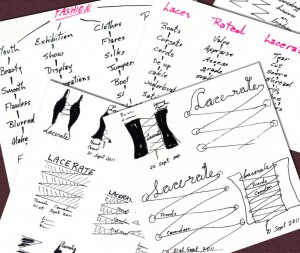Graphic Design is all about problem solving. Whether it’s about figuring out what is the right business card for your business or how you get a particular message across when promoting your short film. Naturally, there are standards and principles of balance, hierarchy, contrast, repetition, and alignment that go into good graphic design but it is still fair to say that it is more of an art than a science.

The process of design is not all together different to the film production process. Let’s say the problem at hand is how to develop a plan for a brochure for a fashion show (one of our client briefs). First, we develop a script, a wordplay of ideas of interrelated concepts. The designer’s storyboard is a series of drawings, sketches, mood-boards, and colour palettes, from which to seek inspiration.
The set is then built as the designer gathers resources, photographs, refines illustrations and layouts are built and thrown away till something emerges that the director likes. The designer’s shoot, be it photography or illustration, is completed. The designer’s edit suite is probably Adobe’s Indesign, Illustrator, and Photoshop. Finally, with the client’s approval, the printing is complete, and the brochure is folded and distributed and in due course brings in an audience of eager buyers to the fashion show.

In the film business, they have been known to say that there are always three stories: the one you write, the one you shoot, and the one you edit. The design is no different. Your script or sketching may often seem to have ideas and concepts that do not even show up in the final brochure, but this is the well-recognised process of development all good graphic designers work through that becomes the pattern of inspirations that results in the final work. It’s this degree of thoroughness for which you as the client are paying.